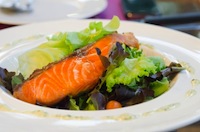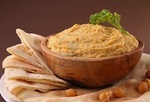Off-Season Nutrition

For most triathletes, triathlon “off-season” is quickly approaching. Many athletes welcome this unstructured, gadget-free training cycle. It is a time to train for fun, with no pressure of reaching heart rate and wattage zones, mile splits, or swim set PRs. Off-season is an opportunity to rejuvenate our bodies and minds, but depending on your goals, this may or may not be the time to become relaxed with food choices.
Although your workouts become less strenuous with most sessions in zone 2, the off-season is a GREAT time to focus on your nutrition training. Yes, you read that correctly, nutrition training.
Now that our workouts are less demanding, it is important to adjust food intake to match physical training cycles. As our training load goes down, so should our food consumption. This base training cycle provides the opportune time to work toward an optimal body weight and body composition so that when race season rolls around, you are metabolically efficient and will reap the performance rewards.
Although this can be incorporated at any time, focusing on achieving a metabolically efficient metabolism in a lower training volume and intensity cycle is easier.
 Metabolic flexibility training is the process of improving your body’s ability to use internal fat and carbohydrate stores depending on the intensity of the activity. The more efficiently we burn fat while preserving our limited and carbohydrate stores, the longer and faster we can go without “bonking,” the less we rely on supplemental sports nutrition, therefore, the less GI distress we encounter. The body has approx. 80,000 calories are stored as fat, and only 1,400-2,000 calories as carbohydrates. It is worth noting that fat can only be burned with carbohydrates on board. Once your glycogen stores are empty, fat is metabolized into fuel very slowly and inefficiently, hence the “bonk.” Therefore, fat is a great energy source as long as you have glycogen or supplemental sports nutrition along with it.
Metabolic flexibility training is the process of improving your body’s ability to use internal fat and carbohydrate stores depending on the intensity of the activity. The more efficiently we burn fat while preserving our limited and carbohydrate stores, the longer and faster we can go without “bonking,” the less we rely on supplemental sports nutrition, therefore, the less GI distress we encounter. The body has approx. 80,000 calories are stored as fat, and only 1,400-2,000 calories as carbohydrates. It is worth noting that fat can only be burned with carbohydrates on board. Once your glycogen stores are empty, fat is metabolized into fuel very slowly and inefficiently, hence the “bonk.” Therefore, fat is a great energy source as long as you have glycogen or supplemental sports nutrition along with it.
Performance benefits aside, being more metabolically flexible improves body composition and weight, lowers triglyceride levels, stabilizes blood sugars, and improves lipid profiles.
 How to improve metabolic efficiency/flexibility?
How to improve metabolic efficiency/flexibility?
We improve our body’s ability to use fat for fuel by modifying the composition of meals.
When we eat a plate full of carbohydrates with minimal protein and fat (i.e., pasta, potatoes, bagels, cookies, etc.), the body releases insulin, suppressing the fat-burning system. Eating a combination of carbohydrates and lean protein at each meal/snack has a lower insulin response, lowers the blood glucose response, and burns fat for energy while increasing satiety. It is best to get carbohydrates from nutrient-dense foods such as fruits and vegetables and whole-grain carbs, which support a strong body and robust immune system.
Although athletes benefit from sports nutrition supplements in training and racing, additional nutrition support is not needed during the off-season when the focus is on aerobics, technique, and shorter sessions. Water and electrolyte beverages will be sufficient during a 90-minute to 2-hour zone 2 ride.
Contact Susan Kitchen, MPH, RD, CSSD, for a customized metabolic efficiency nutrition plan.









